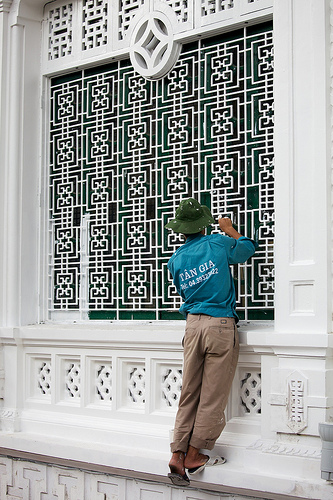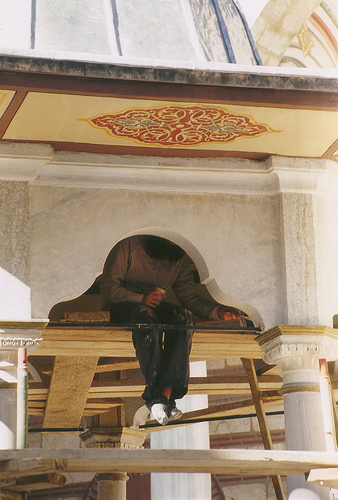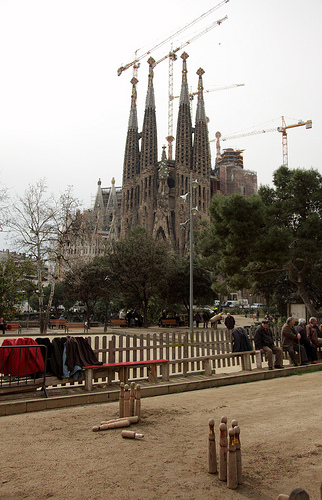Chernivtsi’s Cathedral: Ukraine’s Spiritual Heart
In the rolling hills of western Ukraine, where history whispers through ancient stones and spires, Chernivtsi’s Cathedral stands as a defiant emblem of resilience and tradition. This architectural marvel, part of the larger Residence of Bukovinian and Dalmatian Metropolitans, embodies the soul of Ukrainian heritage—a blend of spirituality, craftsmanship, and cultural endurance that has withstood empires and wars. Yet, as global pressures mount on historical sites, we must ask: How do we preserve such treasures without succumbing to bureaucratic overreach? Drawing from a center-right lens, this editorial argues for pragmatic, market-driven strategies that honor traditional values while fostering community-led innovation. Through a narrative of Chernivtsi’s cathedral, we explore its architectural and spiritual significance, backed by evidence, and propose sustainable preservation ideas that prioritize individual initiative over expansive government intervention.
The Architectural Legacy of Chernivtsi
Chernivtsi’s Cathedral, with its ornate facades and towering presence, is more than a building; it is a testament to the ingenuity of 19th-century European architecture infused with Ukrainian flair. Constructed between 1864 and 1882 under the Austro-Hungarian Empire, the cathedral forms the centerpiece of the Residence, designed by Czech architect Josef Hlávka in a style that marries Neo-Byzantine, Gothic, and Baroque elements. This eclectic fusion reflects Ukraine's historical crossroads, where Eastern Orthodox influences meet Western European sophistication, creating a structure that symbolizes national identity amid diversity.
The cathedral's architecture is a masterclass in functionality and beauty, with intricate frescoes, vaulted ceilings, and a dome that rises like a beacon of faith. Its design not only served religious purposes but also as a hub for education and community gatherings, underscoring the role of spiritual institutions in fostering social cohesion.  The cathedral's facade emerges from the morning mist, its spires reaching toward the sky, a silent guardian of Ukraine's architectural heritage.
The cathedral's facade emerges from the morning mist, its spires reaching toward the sky, a silent guardian of Ukraine's architectural heritage.
Yet, this legacy faces modern threats. Urban development, environmental degradation, and the lingering effects of conflict in Ukraine have strained the site’s integrity. According to a report from the UNESCO World Heritage Centre, which designated the Residence as a World Heritage site in 2011, such landmarks are vulnerable to "anthropogenic factors" like pollution and tourism overload. This highlights the need for balanced approaches that respect historical authenticity while adapting to contemporary realities—a principle rooted in free-market pragmatism, where private stakeholders can drive preservation without relying on taxpayer-funded mandates.
The Spiritual Heartbeat of Ukraine
At its core, Chernivtsi’s Cathedral pulses with the spiritual essence of Ukraine, a nation where faith has long been a bulwark against adversity. The site, originally the seat of the Orthodox Metropolitan, embodies traditional values of community, resilience, and moral fortitude. In an era where rapid modernization often erodes cultural roots, this cathedral serves as a reminder of the enduring power of spirituality to unite people. Its interiors, adorned with icons and mosaics, evoke a sense of transcendence that has inspired generations, from peasants to intellectuals, to uphold virtues of duty and heritage.
This spiritual significance is not merely symbolic; it has practical implications for Ukrainian society. As detailed in an analysis by the Institute for Historical Research at the University of Oxford, sites like Chernivtsi have historically promoted social stability by providing a counterbalance to political turmoil. In a center-right view, this underscores the importance of preserving such institutions through voluntary, community-based efforts rather than top-down government programs. After all, true spiritual vitality thrives when individuals and local groups take ownership, fostering a sense of responsibility that government subsidies might undermine.
However, the cathedral's spiritual role is increasingly at risk. The 2022 Russian invasion of Ukraine has spotlighted the vulnerability of cultural sites, with reports from the Wall Street Journal detailing how conflicts exacerbate damage to religious landmarks. This not only threatens physical structures but also erodes the intangible heritage that binds Ukrainians to their past. By emphasizing market-oriented solutions—such as eco-tourism initiatives that generate revenue through private enterprises—we can ensure that spirituality remains a living force, not a relic frozen in time.
Challenges and Pathways to Sustainable Preservation
Preserving Chernivtsi’s Cathedral requires confronting real-world challenges, from climate change-induced weathering to economic constraints. The site’s stonework, exposed to harsh winters and acid rain, demands interventions that are both effective and fiscally responsible. A study by the International Council on Monuments and Sites (ICOMOS), which outlines global standards for heritage conservation, emphasizes the need for adaptive strategies that integrate modern technology without altering historical essence.
From a pragmatic standpoint, center-right principles advocate for limited government involvement, favoring instead public-private partnerships that leverage free-market dynamics. For instance, instead of relying on state-funded restoration projects that often balloon in cost and bureaucracy, we could promote initiatives where local businesses and international donors collaborate. Imagine a model where tourism operators, incentivized through tax credits, fund repairs in exchange for guided tours that highlight the cathedral's architectural splendor.  Workers meticulously restore the cathedral's interior, blending traditional craftsmanship with sustainable practices to safeguard its spiritual aura for future generations.
Workers meticulously restore the cathedral's interior, blending traditional craftsmanship with sustainable practices to safeguard its spiritual aura for future generations.
Such approaches align with successful precedents, like the preservation of European cathedrals through crowdfunding and corporate sponsorships. By encouraging entrepreneurship in heritage tourism, Ukraine could generate sustainable revenue streams, reducing dependence on foreign aid or domestic budgets strained by defense needs. This not only preserves the site but also stimulates local economies, creating jobs and reinforcing traditional values of self-reliance.
Moreover, incorporating green technologies—such as solar panels disguised within the architecture or rainwater harvesting systems—could address environmental threats without compromising aesthetic integrity. As noted in a piece from the World Monuments Fund, sustainable practices in heritage sites can be achieved through innovative, market-based funding, ensuring that preservation efforts are both ecologically sound and economically viable.
A Pragmatic Path Forward
In conclusion, Chernivtsi’s Cathedral represents the indomitable spirit of Ukraine, where architecture and spirituality converge to narrate a story of endurance and tradition. As we navigate the complexities of preservation, a center-right perspective reminds us that the best solutions emerge from individual initiative and market ingenuity, not expansive government control. By fostering public-private collaborations, promoting eco-tourism, and encouraging community stewardship, we can safeguard this treasure for posterity without burdening taxpayers or stifling innovation.
Ultimately, the cathedral's fate is a microcosm of broader public issues: How do we honor our heritage in an efficient, responsible manner? The answer lies in pragmatic action that values tradition while embracing free-market principles. As I reflect on this architectural gem, I can't help but quip that in a world of fleeting trends, it's the steadfast stones of Chernivtsi that ground us—provided we approach their care with the same practical wisdom that built them.

